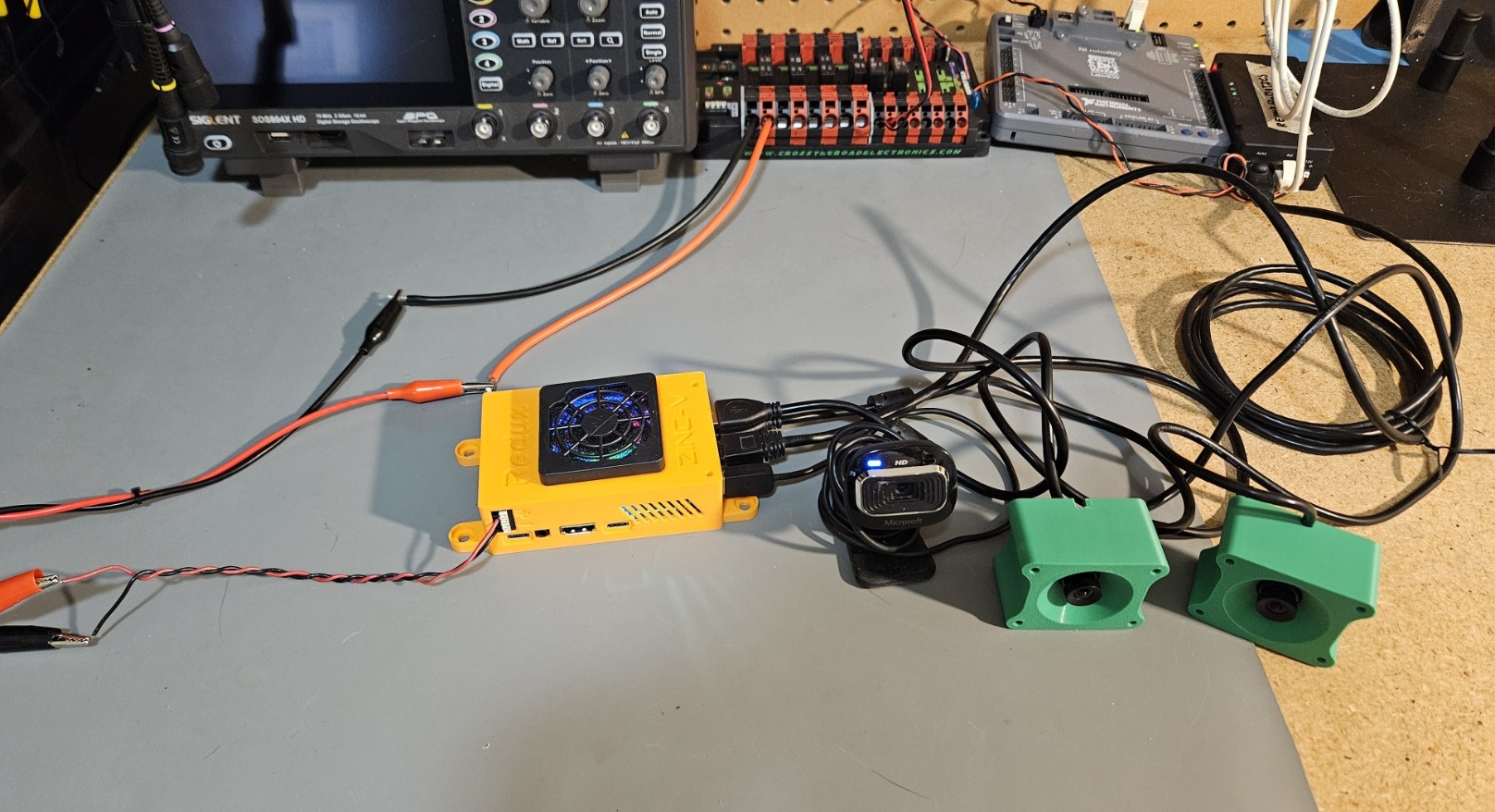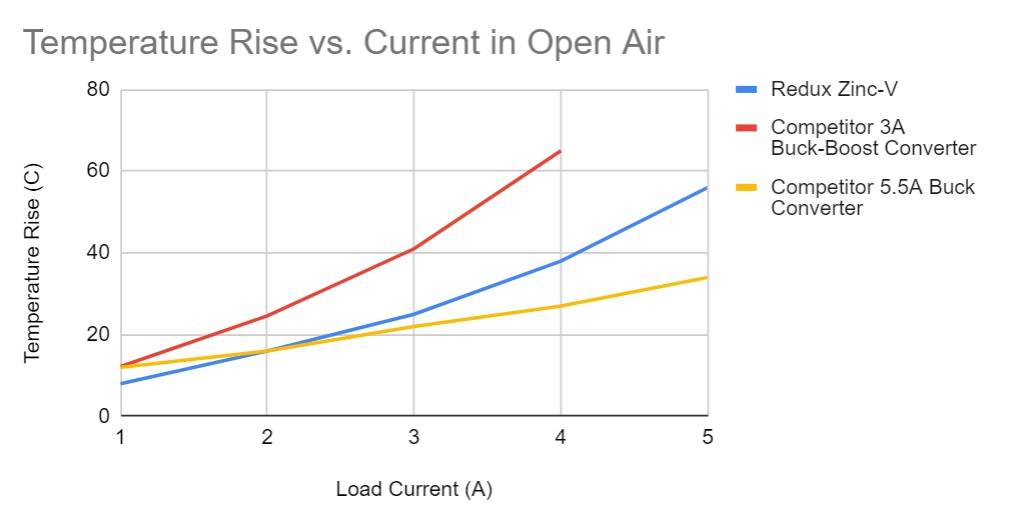Performance¶
When Does the Zinc-V Work Best?¶
The Zinc-V is optimized for use in FRC, powering a single coprocessor - though it can support multiple as long as the maximum current draw limits are respected. It has the highest efficiency below 2A of sustained current draw, though it will comfortably deliver up to 4A continuously.
Making use of the locking USB-C connector will provide reliable power to any coprocessor. We offer a printable model for an Orange Pi 5 case that includes a pocket for a locking nut, or a seat for a Zinc-V.
Example Use Case¶
The below setup contains the following:
Coprocessor: Orange Pi 5 running PhotonVision
Case: Internal Zinc-V Vented Opi5 Case
Cooling: 50mm 5V fan powered by Zinc-V, mini heatsink on processor
- Cameras:
Lifecam HD-3000, used as driver camera
OV9281 global-shutter monochrome camera, used for Apriltag detection
OV9782 global-shutter color camera, used for a 2024 Note detection pipeline
With Photonvision running all three cameras simultaneously, the Zinc-V only needed to deliver an average of 1.51A to the Orange Pi 5. The Pi reached a peak CPU temperature of 58C after 15 minutes - well under the thermal throttling limit.

Competitor Comparison¶
While other power modules might boast higher output currents, this typically comes with a loss of efficiency at lower currents or a higher minimum input voltage.
A comparison between the Zinc-V and two competitors is shown below. Below 2A, the Zinc-V runs cooler and more efficiently than the competition.


